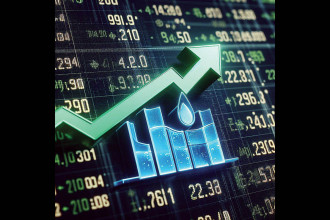
Acknowledging and recognising a supercycle is no mean feat especially given the scenario of the world today. For commodities, a supercycle can be explained as an extended period of enhanced demand for a wide spectrum of commodities leading to a surge in prices eventually followed by a collapse of demand and the spiraling of prices. In retrospection, the cycles are viewed as decade-long periods in which the basket of commodities trade above their long-term price trends. Market pundits and analysts have professed that a new supercycle is around the corner given the depreciating dollar and accommodative central banks and fiscal policies supporting infrastructure spending coupled with renewable energy.
Last Supercycle
As per market researchers, BRIC constituted the last supercycle. BRIC, which includes Brazil, Russia, India and China, represented 2.6 billion or approximately 40% of the global population in the year 2000. The conjecture was that BRIC nations were on a path of rapid industrialisation which suggests that the economies required an unprecedented amount of raw materials, food and energy commodities. It is said that the cycle continued for more than 10 years starting from the turn of the millennium and concluded in the preceding decade. When the great financial crisis and the Euro crisis whipped the market dynamics in 2008 and 2011 respectively, the commodities boom started signs of a slowdown. The supercycle finally came to a grinding halt when the Chinese economy reversed from the promised lands.Factors for Current Supercycle
The tumbling US Dollar was one of the major attributes of the last supercycle. Since the bursting of the dot-com bubble in 2001, the greenback had been on a depreciating path. As soon as the US Dollar touched record low levels in the summer of 2008, oil prices surged to their all-time high. The US Dollar had been appreciating until the pandemic factored into the value and the rates fell thereafter. In contemporary times, the Federal Reserve has joined a host of central banks in lowering its interest rates to zero as it is leaving no stone unturned to support a weakening economy. In hindsight, a weak US Dollar feeds into inclined commodity prices. In the international markets, raw materials are mostly priced in US Dollars. Hence, a producer often requires to adjust prices upwards to offset higher production costs in the local currency value. However, a lower US Dollar means that keeping all other factors constant, commodities will become cheaper for an importing nation supporting the higher demand equation. Inflation is notably absent since the great financial crisis despite numerous warnings that zero interest rates and quantitative easing leading to roaring prices. Regardless of the current situation, once the economies reopen, the idea of a supercycle is further supported by increasing demand. Numerous market pundits believe that the government may not implement similar austerity policies which were applied after the last financial crisis. One of the key pillars supporting the supercycle theory is government spending which will speed up once major economies resurface from their respective lockdowns.Commodities Gaining Advantage
Metals used in high-performance batteries including cobalt, lithium and nickel are emerging to support the transition to electric vehicles. This revolution applies to battery-focused materials along with the traditional metals including aluminum which favours building lower weight vehicles and silver which is widely used in photovoltaic installations. The demand for copper would only build due to the move to electrification. In regard to the oil markets, organisations ranging from large corporations to small shale producers have had to cut-down their exploration budgets leading to fewer projects being explored and developed. On the contrary, OPEC members have the spare capacity to respond to stronger demand.Supercycle Comparisons
The second-largest economy China was the only economy to match the high expectations from the last supercycle. As per the World Bank, the country increased its share of global GDP from 3.6% to 16.3%. In the last decade, China transitioned from an investment-driven economy to a consumption-driven model. The practitioners of commodity market anticipate that the strong demand will be driven by changes in the global economy coupled with emerging markets. In comparison with the last supercycle, the geopolitical background paints a different canvas. At the start of the new millennium, China had just joined the WTO and was fueling its demand for its commodities. Two decades later, the US, China and other major economies are ironing out differences and building a better roadmap ahead where tariffs and quotas are used more eagerly.Conclusion
We are amid a supercycle and these supercycles come around not that often. In the last century, market analysts have presumed that only three or four supercycles were recognised. Each supercycle was driven by transformational periods of economic developments commencing from rapid industrialisation of the USA in the 1910s followed by re-industrialisation of Germany and Japan following World War II (1950s) and culminating with the growth in BRIC economies in the 2000s. All factors support the notion of the formation of a new supercycle but caution persists - are we foretelling too early?
Published Date: April 15, 2021, 12:00 am
Post Comment
E-Magazine
RELATED Commodity Perspective





